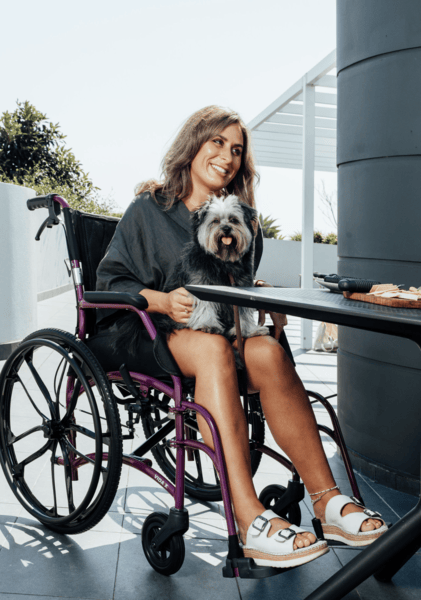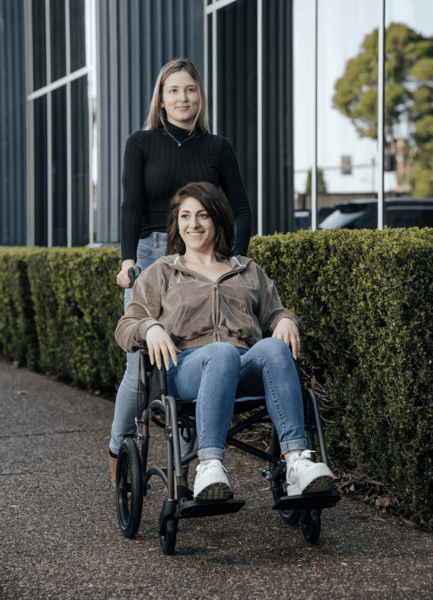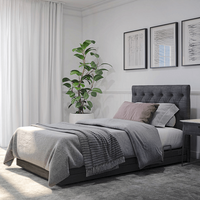Preventing Pressure Injuries in Wheelchair Users

Living with mobility challenges can mean spending extended periods in a wheelchair. While wheelchairs offer essential support and mobility, they can also create health risks, such as pressure injuries (previously known as pressure ulcers or bedsores). These injuries occur when continuous pressure on the skin limits blood flow, particularly over bony prominences such as the sacrum, hips or buttocks. areas like the back, hips, and buttocks.
Other factors that can contribute to developing a pressure injury include friction and shear forces, and microclimate which is heat and moisture impacts on the skin.
Fortunately, pressure injuries are preventable with the right strategies, proper equipment, and a proactive approach to health management. In this blog, we’ll explore practical tips for preventing pressure injuries in wheelchair users, helping to improve both comfort and quality of life.
What Are Pressure Injuries and Why Are They a Concern?
Pressure injuries develop when prolonged pressure cuts off blood circulation to the skin and underlying tissues, causing damage. Wheelchair users who have difficulty changing their posture are particularly susceptible due to the continuous contact between the seat and their body, especially if the wheelchair is not appropriately fitted or if proper pressure relief strategies are not in place.
Without intervention, pressure injuries can lead to serious complications like infections, delayed healing, and significant pain. For wheelchair users, this can further limit mobility and affect overall wellbeing.
How to Prevent Pressure Injuries in Wheelchair Users
Preventing pressure injuries requires a combination of proper seating, regular movement, and attention to skin health. Here’s what you need to consider:
1. Invest in High-Quality Wheelchair Cushions
A well-designed wheelchair cushion can make a significant difference in preventing pressure injuries. These cushions distribute weight evenly and reduce the stress on high-risk areas like the sitting bones. Various types of cushions are available, including gel, foam, and air-filled cushions, each designed to offer specific support based on individual needs.
-
Product Suggestion: Check out MobilityHQ’s range of pressure-relieving wheelchair cushions that help to alleviate pressure and improve seating comfort.
2. Maintain Proper Seating and Alignment
Correct posture and alignment in a wheelchair are crucial to preventing pressure injuries. Regularly check that the wheelchair is properly fitted to the user's body size and shape. Improper seating can increase pressure on certain areas, leading to injury. For people spending extended periods of the day in a wheelchair, a professional seating assessment is recommended to ensure the best fit, features and functions.
Tips for Proper Seating:
-
Ensure your hips are positioned all the way back in the seat.
-
Use back supports or adjustable features to maintain proper spinal alignment.
-
Ensure footplates are correctly adjusted to support the feet to prevent hips sliding forward.
-
Ensure thighs are level to allow redistribution of weight over a greater surface area.
3. Implement Regular Repositioning and Shifting
Movement is essential for relieving pressure on specific areas of the body. If the wheelchair user has the strength and mobility, encourage them to shift their weight every 15 to 30 minutes to relieve pressure. For those who cannot reposition themselves, caregivers should assist with regular repositioning.
Repositioning Techniques:
-
Leaning from side to side to allow blood to flow to the skin over the ischeal tuberosities (sitting bones).
-
Forward tilting to reduce pressure on the back and buttocks.
-
Using a reclining or tilt-in-space wheelchair for those with limited mobility.
4. Prioritise Skin Care and Daily Checks.png)
Monitoring skin health is an important part of preventing pressure injuries. Regularly check the skin for early signs of pressure injury, such as redness, swelling, or darkened areas. Keeping the skin clean, dry, and moisturised can prevent breakdown, while addressing issues quickly can stop a minor injury rapidly becoming a severe injury.
Signs to Look For:
-
Red or discoloured skin that doesn’t fade after pressure is relieved.
-
Hard or swollen areas.
-
Warmth or coolness in the affected area.
5. Ensure Adequate Nutrition and Hydration
A healthy diet and staying hydrated play a crucial role in skin integrity. Ensure that wheelchair users consume a balanced diet rich in vitamins and proteins, which support skin health and repair. Proper hydration also helps maintain skin elasticity and resilience.
Dietary Tips:
-
Include foods rich in Vitamin C and Zinc, which aid in tissue repair.
-
Encourage drinking plenty of water to maintain hydration.
How Technology Can Help Prevent Pressure Injuries
Advances in assistive technology have introduced a range of products that help wheelchair users avoid pressure injuries. Some wheelchairs now feature pressure-relieving systems that automatically adjust seating position throughout the day to relieve pressure points. Additionally, smart cushions are being developed that monitor pressure distribution in real-time, alerting users or caregivers when it’s time to shift positions.
For those at higher risk of developing pressure injuries, these technological solutions can provide an extra layer of protection and peace of mind.
The Importance of Regular Assessments for Wheelchair Users
Routine assessments by healthcare professionals including occupational therapists are crucial in ensuring that wheelchair users are seated correctly and are using the appropriate equipment. These experts can help identify any adjustments needed to the wheelchair or seating to prevent pressure injuries. They can also provide recommendations for additional products or support systems to improve overall comfort and safety.
Protect Your Health with the Right Pressure Care Solutions
Pressure injuries are preventable with the right combination of equipment, routine, and care. From investing in high-quality wheelchair cushions to ensuring regular repositioning, there are numerous strategies available to reduce the risk of developing these painful and debilitating injuries. At MobilityHQ, we are dedicated to helping wheelchair users maintain their health and comfort with a wide range of pressure care products designed to meet diverse needs.
Visit MobilityHQ’s Pressure Care page to explore our selection of pressure-relieving cushions, supports, and other equipment to help you stay comfortable and injury-free.

































